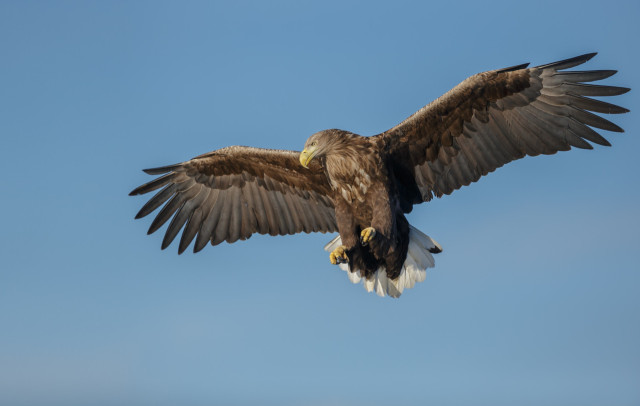With a whopping wing span of up to 2.5 metres, the sea eagle is the UK’s biggest bird of prey and you can now see them along the River Arun.
Favouring rocky coastlines and estuaries, this magnificent feathered beast is best identified by its size and distinctive white tipped tail. Driven to extinction in the UK during the 20th century by illegal killing, egg theft and pesticides such as DDT which thinned their eggs shells causing huge numbers of chick losses, these beautiful birds have recently been reintroduced on the Isle of Wight and are now moving further afield.
Fully matured sea eagles are much bigger than buzzards or red kites which we are lucky enough to now be familiar with here in southern England. Look for their prominent hooked yellow beak - bigger than their fancier cousin the Bald Eagle - and their piercing golden eyes, able to pick out prey over a mile away. You might spot a flash of yellow legs and talons as they dive for a mouse or swoop in for a closer look at you.
Feasting mainly on fish, birds and mammals, they are not fussy eaters and often munch away on carrion. They are also opportunists, happy to steal food from other birds. When fishing over water they tend to fly low, quickly snatching a fish - very different to other fish hunting birds like Ospreys who dive from great heights. Keep an eye out for this key identifying behaviour.
Working together to build their nests, both the male and female sea eagles forage and place sticks high up in mature trees to form their impressive looking eyries. Look out for these structures along the Arun as they tend to build a few in their territory and will often reuse them for years to come.
